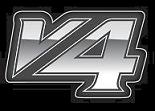
HARDWARE INSTALLATION
PREV: Software Installation HOME NEXT: System Setup
|
1. RadioEye
The RadioEye has a 90 degree conical coverage pattern. Mount the RadioEye in such a way as to cover the performance area. When possible, try to mount the RadioEye as close to the centre of the performance area as possible. However, this is not essential to achieve good system operation. Mount the RadioEye with the connectors facing to the rear of the stage (pointing in the "upstage" direction). Connect the RadioEye power supply to the RadioEye and feed AC power to the power supply. 2. CAT 5 cables Connect a CAT 5 cable to the RadioEye (long enough to reach the location of the network switch). Connect CAT 5 cables to the Stagetracker FX audio matrix and the user-supplied computers. Connect all CAT 5 cables via a simple network switch. 3. TCU Place the TCU in the near vicinity of the performance area and apply power to it. Line-of-sight between the TCU and the performance area is not essential. Note that the TurboTags will only transmit positional information while the TCU is active. 4. TurboTags and charger Supply power to the TurboTag charger and attach TurboTags to charge them. You can expect six to eight hours operation from a two hour charge. 5. Audio Matrix The Stagetracker FX audio matrix uses AES/EBU digital inputs and outputs exclusively. An AES/EBU to XLR wiring diagram is available here. If the matrix is to be connected directly to any analogue equipment AD/DA converters will be necessary. A. Connecting the audio matrix to a mixing console All input sources (microphone signals, effects returns etc) to be tracked by Stagetracker FX must be sent independently to an individual audio matrix input. Channel strip direct outputs are usually the best way to achieve this. B. Connecting audio matrix outputs to the audio system In order to achieve effective localisation, the Stagetracker FX audio matrix outputs must be connected directly to each individual speaker or speaker cluster (or their processors) in the sound system. The chosen method of connection will depend on the equipment available and the desired level of flexibility required. The following methods are suggested ranging from least to most recommended: |

|
| In-Line |
Connect the audio matrix directly in-line between the mixing console and the speaker amplifiers or controllers.
All signals from the console will pass through the Stagetracker FX matrix at all times.
|
| Insert on outputs |
If individual console outputs are being used to access the speaker system, Stagetracker FX audio matrix outputs may be inserted on the console output insert returns. In this way, the Stagetracker matrix will be active when the inserts are activated and de-activated when they are inactive.
The user may choose whether he wishes to send signals to the speaker system via the Stagetracker FX matrix or directly from the console.
|
| Bus into console outputs |
If individual console outputs are being used to access the speaker system and if the console has this facility, the outputs from the Stagetracker FX matrix can be bussed in to the console outputs. This gives the advantage of being able to send signals to the speaker system via the Stagetracker FX matrix or directly from the console simultaneously. This is the recommended connection method. |
|
When all connections have been made and the individual parts are powered up, start the V4 Tracking Engine software. Starting the Effects Engine is optional at this stage. The V4 Tracking Engine screen will inform you of the status of the data connection to the RadioEye and to the audio matrix. |
PREV: Software Installation HOME NEXT: System Setup